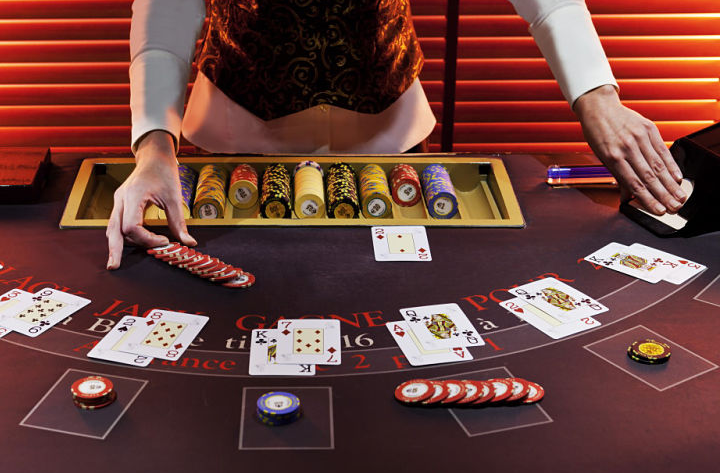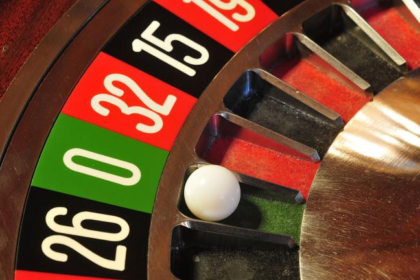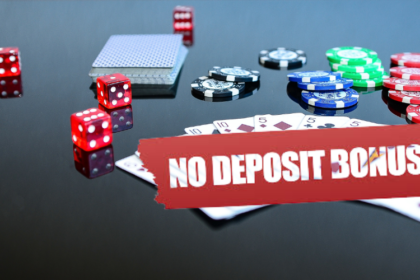Blackjack is a true classic and is considered the ultimate in many casinos. So there is no doubt that interest in the card game is also breaking all records online. The fact that Blackjack is so popular is due, on the one hand, to the great chances of winning, and on the other hand, to the rules quickly learned. Another reason why the game is very popular, especially among experts, is the many possibilities to influence the course of the game individually with strategic decisions. But beginners also get their money’s worth in seconds, whether they’re relying on well-known tactics or just trusting their intuition.
Game Configuration
The seats at the blackjack table are arranged in a semicircle around the dealer who deals the cards. Each place at the table is marked by a betting square (Player’s Bet). To start a game, place the desired bet on the betting area by selecting the desired chip at the bottom of the screen and clicking on the betting area. To place your bet, you can also use different coins at the same time. If you have placed the wrong piece, you can take it back by clicking on the corresponding button.
Your bet will remain in the betting area at all times during the game. The chips do not move until the end of the game, when either you are paid your winnings or your chips are collected (if you lose).
After all, players have placed their bets; the dealer deals two cards from the deck (Dealing Shoe) clockwise to all players (Player’s Hand) and himself. Cards are always dealt with one at a time and from the dealer’s point of view from left to right, so from your point of view from right to left. On the last of the turn, the dealer also receives his cards (Dealer’s Hand), but he only puts the first face up in front of him.
Then the game can begin! There are certain rules, which may vary from table to table. These are briefly explained in the middle of the table. It mostly mentions up to what card value the dealer takes extra cards, how much Blackjack or insurance pays.
Blackjack Card Values
Blackjack is played with poker cards which, unlike typical Swiss Jass cards, also include the numbers 2 to 5. As a result, a deck of cards consists of 52 cards instead of 36, like Jass. To reduce card counting, Blackjack is typically played with six decks of cards, and online it is often played with eight decks of cards, resulting in the deck having 312 or 416 cards.
Blackjack card values can be learned very quickly. All cards with a number exactly match that numeric value. Face cards, Jack, Queen, and King all have a value of 10, so 10 points is the most common value, as there are four cards per suit having this value (10, jack, queen, and king). The ace is the special case of Blackjack because it can take two different values: It takes the value of 1 or 11, whichever is more appropriate in the given context. Basically, you can remember that the ace always counts for 11 points unless you exceed 21 points by doing so (the explanation of why 21 points are important is in the chapter “Object of the game “), in which case the value changes to 1.
The Goal of The Game
Blackjack consists of using the number 21 and getting as close to that value as possible but not exceeding 21 points. Unlike poker, however, you are not playing against other players but only against the bank.
The object of Blackjack is to get closer to the 21 with its cards rather than the dealer. Points are added as described above. If your score is still too low after the first two cards, you can ask (“buy”) more cards from the dealer until you feel you are close enough to 21 points. But be careful: as soon as you exceed 21 points, you lose the game! Therefore, think carefully about when you should apply for an additional card and when you should not!
The same rules apply to the dealer as to you: the goal is for him to get as close to 21 as possible, but as soon as he has “overbought,” all players who are still in the game win. In blackjack, however, the dealer cannot actively determine when to take more cards and when to not, as players can, but he follows clear rules up to which value he takes more cards.
For you as a player, there are three different ways to score success:
The player has blackjack, which means that the total number of points he has after the first two cards is 21. If the dealer also has blackjack, the player does not get his bet back; otherwise, the player wins the same hand if the dealer has 21 points. In most cases, the payout in blackjack is 3: 2 instead of the usual 2: 1.
The player’s own hand has exactly point number 21, but after more than two cards. The player wins against any dealer’s hand less than 21 with a payout ratio of 2: 1 but loses against a dealer’s blackjack.
The total of the player’s own hand is 21 or less, but greater than the dealer’s value.
Your own hand has a total of 21 or less, while the dealer’s cards exceed 21.
If you and the dealer have the same score (21 or less), the game ends in a tie, and you get your stake back.
The Course of The Game
At the start of the game, the dealer deals two cards to each participant, which are placed face up. He also deals two cards to himself but turns over only one. The face-down card is called the hole card.
After you have received your two cards, it is up to you to evaluate your own cards, as well as the dealer’s card. You then need to decide if you are already happy with your score or if you want to request another card from the dealer. There are also other actions you can take; you will find more information on this in the “Strategic options” section.
The decision to want another card (“hit”) or to give up another card (“stand”) continues until you are satisfied with your score and therefore do not take another card, or when you have passed 21 (“bust”). If you overbought and exceeded 21 points, you automatically lost, even if the dealer also overbought himself.
The dealer also follows clear and defined rules in Blackjack. Once all players have completed their turn, he must reveal his second card. If he has 17 or more points in hand, he stands by his value. If, on the other hand, he sees 16 points or less in front of him, he draws another card. The rules for the total number of cards the dealer must draw may vary, so be sure to check the board rules. An ace in the hand always scores 11 points. The only exception to this rule is if it is greater than 21.
When the dealer has finished his stroke, the blackjack game ends with varying results. If the dealer exceeds 21, all other players cash their winnings. Otherwise, participants who are closer to 21 than the dealer are successful. If the player and the dealer have the same score, the game is drawn. No one has won; the player gets their bet back.
Strategic Options
Do you understand the basic rules of blackjack? You are then ready for the many other options that you will come across as the card game progresses.
INSURANCE:
If the dealer’s card is an ace, you have the option of purchasing insurance on the dealer’s blackjack. The cost of insurance is half of your stake, with a payout of the insurance amount of 2: 1
SPLIT:
When splitting, you split two identical starting cards into two hands. This allows you to turn what was originally an unfavorable starting hand into two games of better odds.
DOUBLE DOWN:
When the cards are particularly good, it is possible to double the bet and, of course, to win double the amount at the same time. But beware: after doubling, you will only receive one card.
SURRENDER:
In some cases, it is already clear in advance that a game will be difficult to win. In this case, you are free to go to certain versions of Blackjack and receive half of your stake back.


